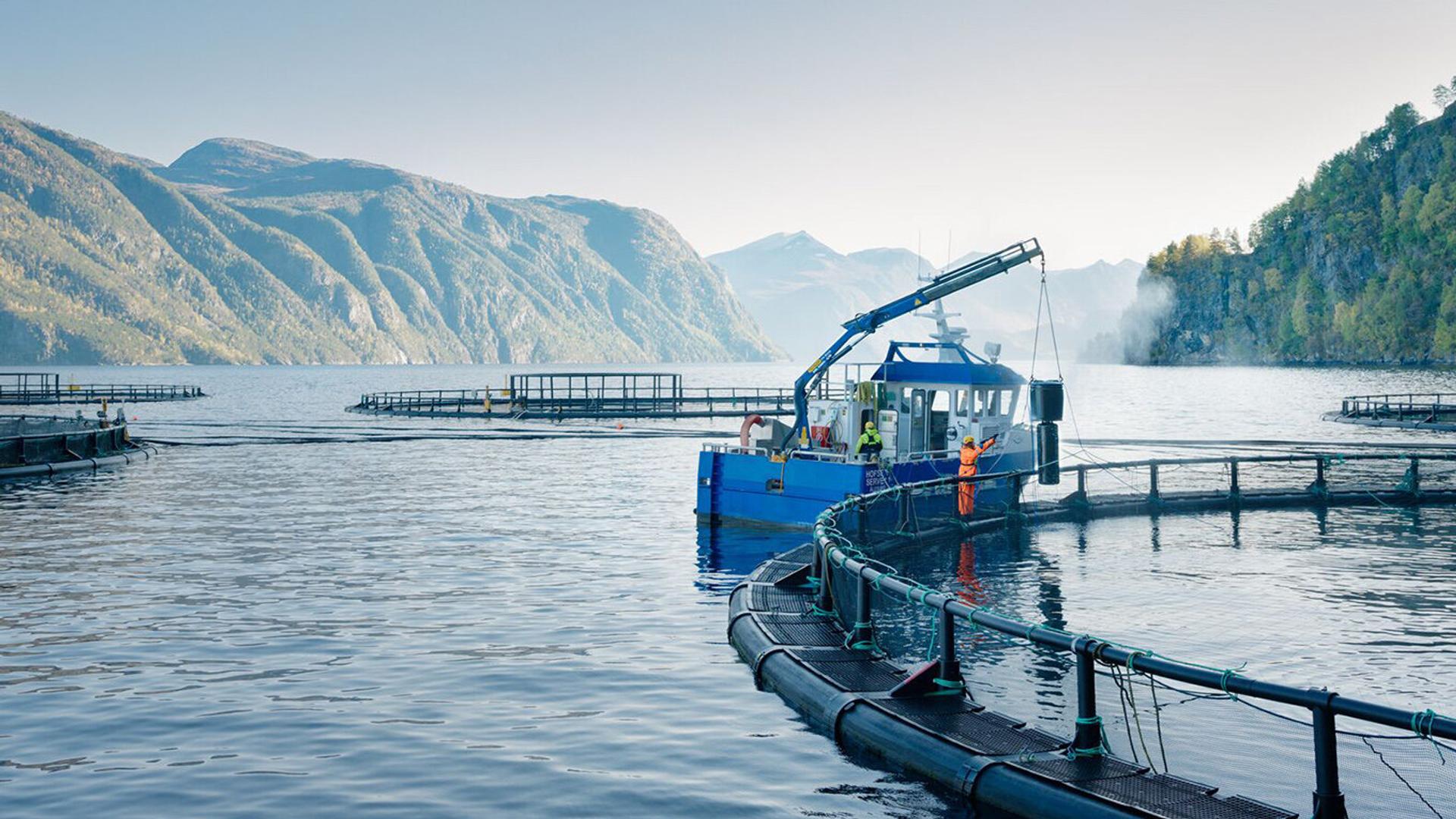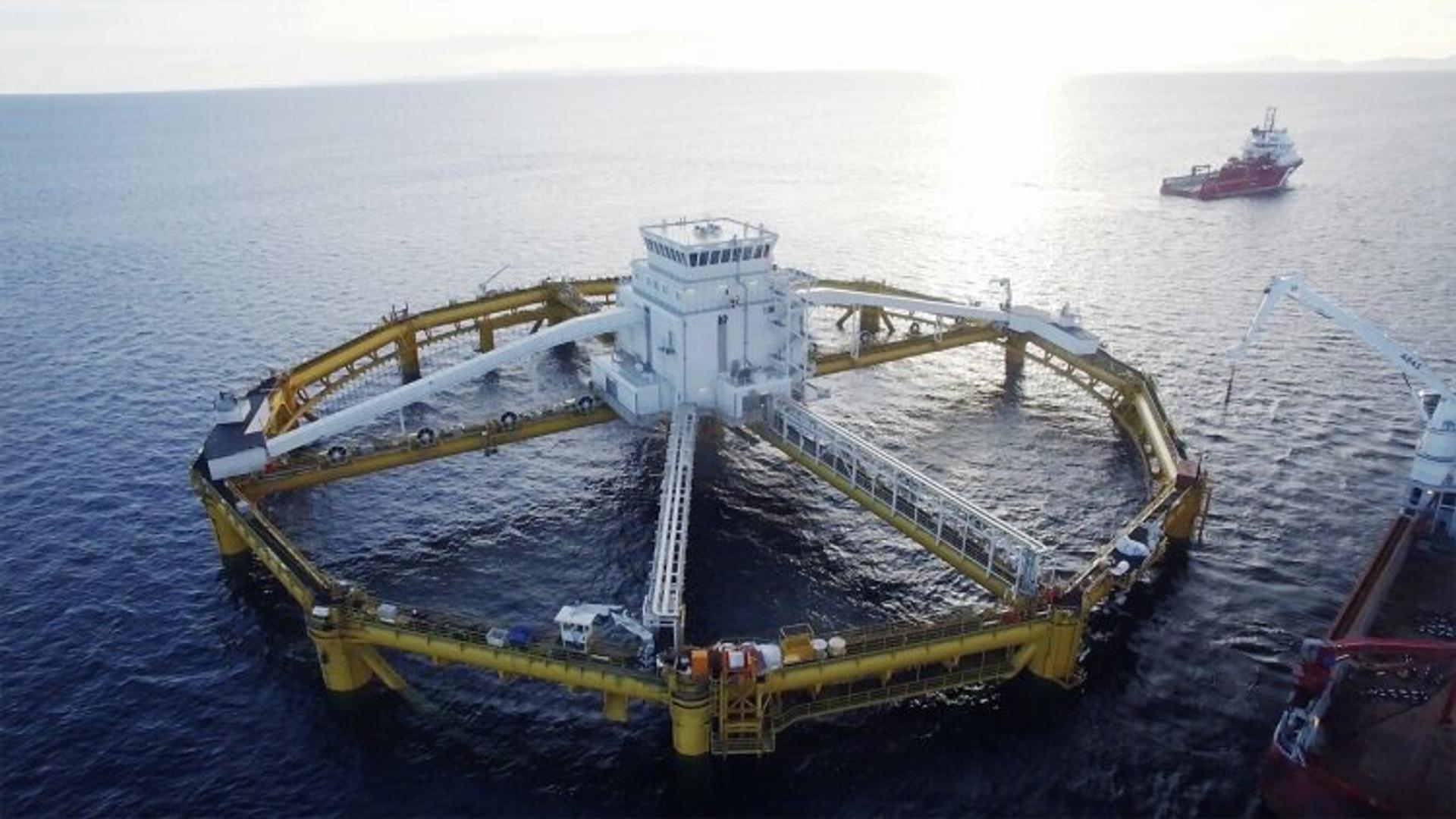Norwegian aquaculture competitors team up to create game-changing innovations

“A long used, but still relevant, comparison is that the Norwegian salmon farming industry is comparable to Tesla. Tesla is a game changer in the car industry. The Norwegian salmon farming industry and its state-of-the-art technology, meanwhile, is a game changer in marine aquaculture,” says Kristian Henriksen, General Manager of NCE Aquatech Cluster.
With more than 100 members, NCE Aquatech is one of several clusters in Norway that are helping to deliver sustainable growth in aquaculture. The world will need to produce 70 per cent more food by 2030. According to the UN, aquaculture is critical to meeting this demand. The Norwegian aquaculture industry can have a major role to play here.
Collaboration and support make Norway unique
“There is a uniqueness in the Norwegian aquaculture industry. We have succeeded due to the close collaboration between fish farmers, the R&D community and technology suppliers, and by receiving support from the Government. We are much stronger together,” says Henriksen.
Support from the Norwegian Government plays a pivotal role in the aquaculture industry. The Green Platform Initiative, for example, provides public funding for large-scale research and innovation projects for green growth and restructuring involving consortia of enterprises and research institutions. In September 2021, the Green Platform announced that it is allocating NOK 96 million (approximately USD 11 million) to a project to develop a complete green value chain for offshore aquaculture.
Offshore aquaculture innovation: the world’s biggest floating lab
It should come as no surprise that a new chapter in Norwegian aquaculture is being written far offshore, where Norway has extensive expertise and experience in safe operations in harsh and exposed conditions.

Ocean Farm 1 from SalMar is a full-scale pilot facility for testing, learning, and R&D. It is specifically equipped for research work, with particular focus on biological conditions and fish welfare. Installed off the coast of Central Norway in 2017, Ocean Farm 1 minimises the environmental footprint of marine aquaculture, improves fish welfare and avoids space constraints, providing greater opportunities for responsible, environment-friendly fish farming.
“Farming fish in the ocean, or offshore, is a sustainable and efficient way to increase food supply. The cold-blooded fish do not require energy for heating. Plus, there is no need to utilise energy to handle gravity at a land-based facility. Therefore, offshore farming can utilise energy towards growth,” says Henriksen.
The opportunities for R&D provided by Ocean Farm 1 have led SalMar to call it “the world’s biggest floating lab”. SalMar is also a consortium partner in the above-mentioned offshore aquaculture project.
Ultra-low antibiotic use thanks to new vaccine technology
Aquaculture has grown to become Norway’s second biggest export industry, and this growth has been driven to a great degree by the development of innovative technologies and methods in a number of areas. Norway, for instance, has been a pioneer in vaccines and equipment to administer vaccines. This has resulted in the lowest rate of antibiotic use in fish farming in the world.
“The developments in salmon production and the focus on increased sustainability in marine protein production is unique in Norway. As a result of its research into vaccines, Norway is now using microscopic amounts of antibiotics,” says Henriksen.
The extremely low use of antibiotics is due in good part to the Norwegian company Pharmaq, which develops vaccines for fish. Globally, seven of 10 vaccinated farmed fish are vaccinated with Pharmaq vaccines. Pharmaq has especially strong expertise in salmon, and offers analyses for all of the major infectious diseases that can affect salmonids.
Another Norwegian company, Skala Maskon, has developed a new technology to automate vaccination of farmed fish. Skala Maskon’s fully automated vaccination machine requires only a single operator, allowing fish farmers to administer vaccines at the optimal time in fish development, instead of waiting until vaccination teams arrive on site. This improves fish health, reduces the need for manual labour and lowers vaccine-related transport costs and emissions.
Using the latest machine learning and AI
In addition to creating vaccines and modernising equipment, Norwegian companies are making great strides in software development, data collection and analysis, and application of advanced technology such as machine learning and artificial intelligence (AI).
CreateView, for example, has developed an innovative solution combining camera sensors with AI to automate sea lice counting, monitor fish welfare in real time, and reduce the environmental impact of fish farms. Fish farmers can use the vast amount of data produced by the solution to administer vaccines and implement operating procedures at a favourable time to achieve optimal fish growth and profitability, while reducing environmental impact and resource waste. Moreover, the sensors are designed to be recycled and integrated back into the circular economy.
Data collection and analysis is also a gamechanger in aquaculture. Spillfree is one of a number of Norwegian companies leveraging data to help fish farmers to maximise production yields while shrinking their environmental footprint. Spillfree’s flagship VideoTools is a decision-support and analysis tool for optimising feeding performance. Spillfree’s experts interpret findings from analyses and reports, enabling fish farmers to continually improve the feeding process, thereby reducing waste and increasing fish growth. The company continually improves its tools as well through collaboration with fish farmers, R&D and machine learning.

Norwegian aquaculture industry has open doors
Norway’s culture of innovation and collaboration reaches beyond its borders. “When international companies come to Norway, they have the opportunity to become a part of our warm and open culture. They experience trust, sharing and long-term collaboration between the aquaculture industry, users and the Norwegian Government,” says Henriksen, who encourages international companies to establish operations in Norway.
